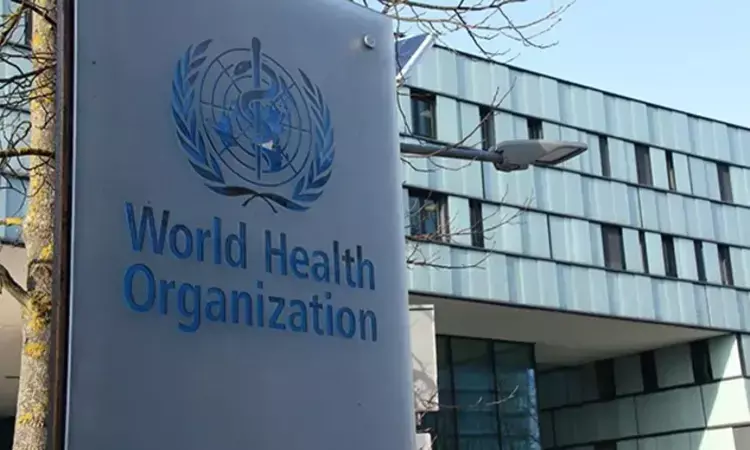- Home
- Medical news & Guidelines
- Anesthesiology
- Cardiology and CTVS
- Critical Care
- Dentistry
- Dermatology
- Diabetes and Endocrinology
- ENT
- Gastroenterology
- Medicine
- Nephrology
- Neurology
- Obstretics-Gynaecology
- Oncology
- Ophthalmology
- Orthopaedics
- Pediatrics-Neonatology
- Psychiatry
- Pulmonology
- Radiology
- Surgery
- Urology
- Laboratory Medicine
- Diet
- Nursing
- Paramedical
- Physiotherapy
- Health news
- Fact Check
- Bone Health Fact Check
- Brain Health Fact Check
- Cancer Related Fact Check
- Child Care Fact Check
- Dental and oral health fact check
- Diabetes and metabolic health fact check
- Diet and Nutrition Fact Check
- Eye and ENT Care Fact Check
- Fitness fact check
- Gut health fact check
- Heart health fact check
- Kidney health fact check
- Medical education fact check
- Men's health fact check
- Respiratory fact check
- Skin and hair care fact check
- Vaccine and Immunization fact check
- Women's health fact check
- AYUSH
- State News
- Andaman and Nicobar Islands
- Andhra Pradesh
- Arunachal Pradesh
- Assam
- Bihar
- Chandigarh
- Chattisgarh
- Dadra and Nagar Haveli
- Daman and Diu
- Delhi
- Goa
- Gujarat
- Haryana
- Himachal Pradesh
- Jammu & Kashmir
- Jharkhand
- Karnataka
- Kerala
- Ladakh
- Lakshadweep
- Madhya Pradesh
- Maharashtra
- Manipur
- Meghalaya
- Mizoram
- Nagaland
- Odisha
- Puducherry
- Punjab
- Rajasthan
- Sikkim
- Tamil Nadu
- Telangana
- Tripura
- Uttar Pradesh
- Uttrakhand
- West Bengal
- Medical Education
- Industry
WHO mission to China fails to identify animal source of Covid-19

While transmission from animals was the likely route, so far "the reservoir hosts remain to be identified", Liang Wannian, head of the China team, told reporters.
Wuhan: The WHO mission to China to uncover the origins of the coronavirus has failed to identify the animal source, scientists said Tuesday.
Experts believe the disease -- which has gone on to kill more than 2.3 million people worldwide -- originated in bats and could have been transmitted to humans via another mammal.
Also Read: WHO plans to combat 20 neglected diseases as Covid-19 strains healthcare
While transmission from animals was the likely route, so far "the reservoir hosts remain to be identified", Liang Wannian, head of the China team, told reporters.
He added that studies showed the virus "can be carried long-distance on cold chain products," appearing to nudge towards the possible importation of the virus -- a theory that has abounded in China in recent months.
He also said there was "no indication" the sickness was in circulation in Wuhan before December 2019 when the first official cases have been recorded.
WHO foreign expert Ben Embarak, who was based in the WHO's Beijing office for two years from 2009, backed up the assertion saying there was no evidence of "large outbreaks in Wuhan" before then.
The mission is a diplomatically knotty one, which was trailed before it began by fears of a whitewash, with the US demanding a "robust" probe and China firing back with a warning not to "politicise" the investigation.
During the closely-monitored visit, reporters were largely kept at arms' length from the experts, but snippets of their findings crept out over Twitter and interviews.
The experts spent one month in China, two weeks in quarantine and the same again on fieldwork.
But, already over a year after the virus emerged, some of it was of questionable relevance to their stated aim of finding the virus source, including a visit to a propaganda exhibition celebrating China's recovery from the pandemic.
The group spent just an hour at the seafood market where many of the first reported clusters of infections emerged over a year ago.
They also appeared to spend several days inside their hotel, receiving visits from various Chinese officials without going out into the city.
But deeper research was carried out at the Wuhan virology institute where they spent nearly four hours and said they met with Chinese scientists there including Shi Zhengli, one of China's leading experts on bat coronaviruses and deputy director of the Wuhan lab.
Former US President Donald Trump repeated a controversial theory that a lab leak may have been the source of the pandemic.
Scientists at the laboratory conduct research on some of the world's most dangerous diseases, including strains of bat coronaviruses similar to Covid-19.
Beijing is desperate to defang criticism of its handling of the chaotic early stages of the outbreak.
It has refocused attention at home -- and abroad -- on its handling of, and recovery from the outbreak.
Also Read: Covid-19 patients to be given 2 doses of Pfizer vaccine in 21-28 day gap: WHO
Medical Dialogues Bureau consists of a team of passionate medical/scientific writers, led by doctors and healthcare researchers. Our team efforts to bring you updated and timely news about the important happenings of the medical and healthcare sector. Our editorial team can be reached at editorial@medicaldialogues.in.


